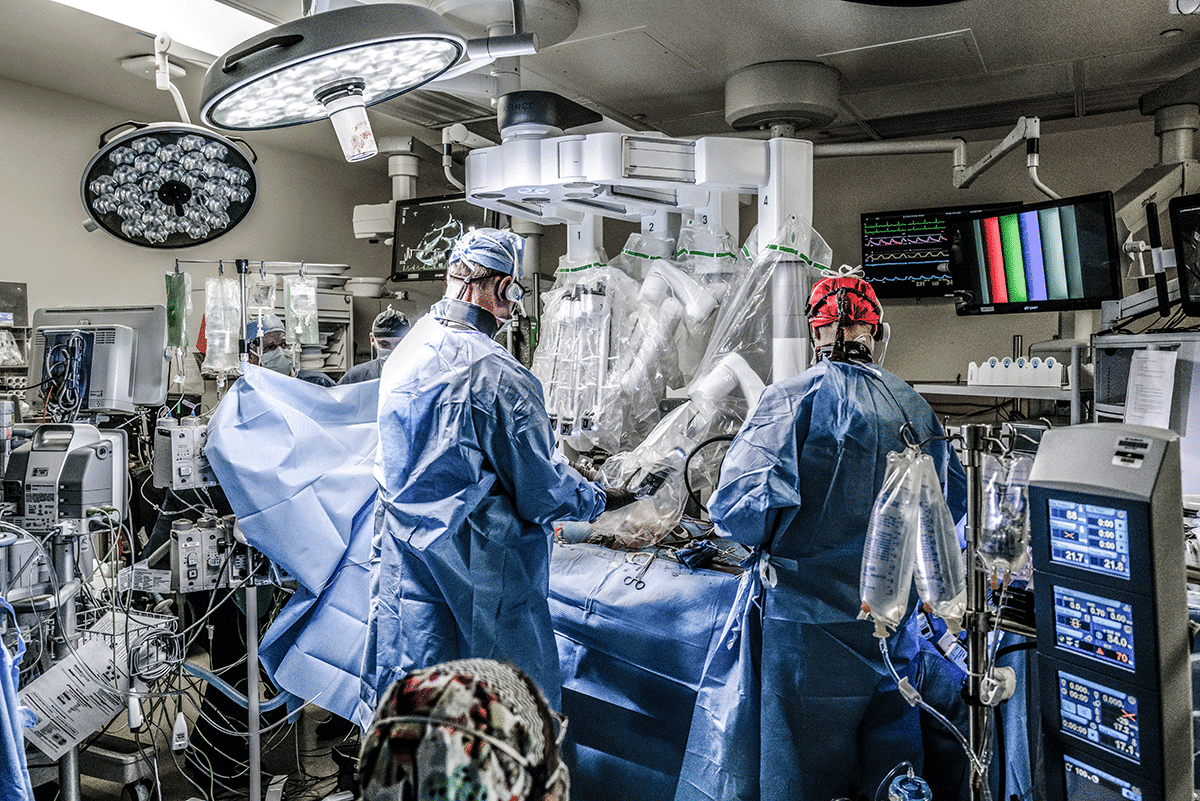You underwent a septal myectomy to treat hypertrophic cardiomyopathy. Now what?
Any surgical procedure requires some amount of recovery time, and septal myectomy is no different. The length of your recovery and how you feel as you recover will vary somewhat, but we answer a few common questions about what recovery looks like below.
Is Recovery Easier After Robotic Septal Myectomy?
There’s no-size-fits-all answer to this question, but in general, yes. Recovery following robotic procedures, including robotic septal myectomy to treat hypertrophic cardiomyopathy, is typically easier for patients for many reasons.
Patients who undergo robotic heart procedures experience a reduced risk of complications, less blood loss, reduced pain, and a quicker recovery overall. It makes sense—traditional surgical procedures often use large incisions to access the body and may touch unaffected tissues as the surgical site is navigated.
Traditional open-heart procedures also include breaking open the sternum and shifting the ribs to provide access to the heart. The sternum is then wired back together after the procedure, requiring an additional stage of recovery and healing.
How Long Will It Take to Recover After Septal Myectomy?
There are two factors that make recovery after a robotic septal myectomy faster and easier in many cases. Robotic septal myectomy uses only small incisions—15 millimeters in length vs. five to eight inches in an open-heart procedure—and only tiny instruments (not a surgeon’s hands) are placed in the body, so less tissue is affected.
Immediately following a robotic septal myectomy at Georgia Heart Institute, patients recover in the specialized heart surgery intensive care unit. During this time, they’re monitored carefully by a care team with training in postoperative care.
Following an open-heart septal myectomy, patients typically stay in the hospital for five to seven days. Those who undergo a robotic septal myectomy may be discharged from the hospital more quickly, in two to five days on average.
Recovery after discharge from the hospital is also often smoother and quicker for those undergoing a robotic septal myectomy, but it is important to pay attention to your body and your care team’s guidance.
Will I Need Follow-up Care After Septal Myectomy?
Follow-up care is needed following any type of surgical procedure, particularly those related to the heart. During the days and weeks after a robotic septal myectomy, you’ll want to keep a careful eye on your recovery, paying special attention to your incisions.
You will likely be scheduled for a follow-up appointment to check your recovery within a week to 10 days. This allows your care team to make sure your heart is functioning well and that you are showing no signs of complications like infection or blood clots.
During this follow-up appointment and others, your surgeon will also offer you guidance on what’s safe to do and what’s not. You’ll be advised on how and when to return to normal activities, including lifting objects and driving.
You’ll also continue to see your cardiologist and other heart health specialists to check on your heart health. While septal myectomy typically works effectively, in a small percentage of patients, the septum may re-thicken following surgery. Regular checkups with your care team can help ensure you receive testing and further treatment when necessary.
About Georgia Heart Institute
Georgia Heart Institute is one of the only programs in the state offering robotic septal myectomy. To learn more or to find out if you are a candidate for the robotic procedure, call (770) 219-7099.



